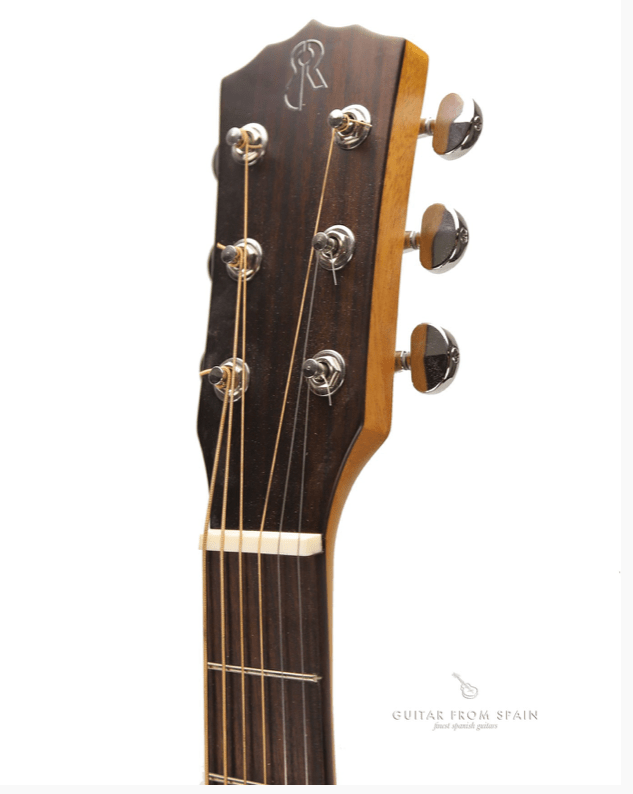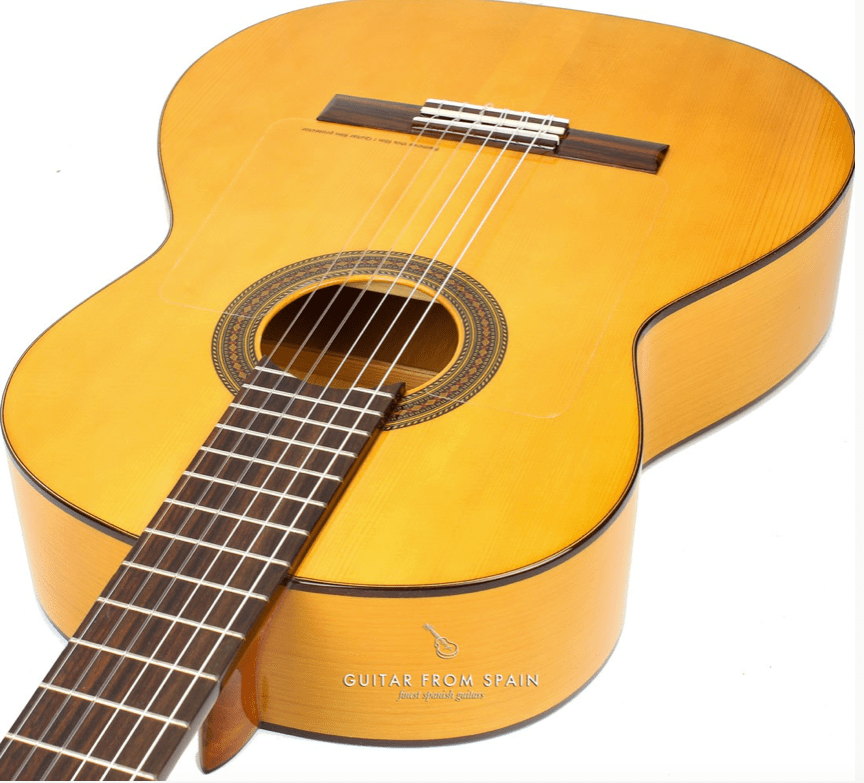A guitar’s nut and saddle are the two strips of material – usually made of bone or melamine on a quality classical, acoustic or flamenco guitar – that serve as the support points of the strings. The nut is located at the joint between the headstock and fretboard, and the saddle is found on top of the bridge, which is positioned in the centre of the lower bout of the soundboard.
The nut and saddle stretch the strings tightly between them to ensure they vibrate in a stable and controlled way, so that when you play your instrument, it produces a powerful and clean sound.

The nuts and bolts of the issue
The grooves of the nut secure the guitar’s strings at a uniform lateral placement, and guide them from the tuning pegs, down the neck to the saddle. The cut and fit of the nut needs to be flawless: if the grooves are too wide, the strings can slip, causing an unwanted buzzing sound; but if they are too narrow, they will pinch the strings, making it difficult for you to keep them in tune, as well as tuning them accurately in the first place: in fact, this small, unassuming component of your guitar is, in all likelihood, the culprit of most of the tuning problems you may be encounter.

Nut job
In case of the above, you would be forgiven for assuming your tuning machines are to blame, but it’s not always all in the name. Before replacing your far more conspicuous (and expensive) tuning machines, it’s well worth checking out your nut first. To make sure all is in order, lift a string out of the groove: it should come out easily, without snagging. Similarly, check there is no room for any sideward movement of the strings within the grooves. If your nut fails either of these tests, it’s probably time to replace it, which, unless you have the specialized tools and precision skills to do it properly, is best left to an experienced guitar technician.


Back in the saddle
The saddle, like the nut, spaces the strings at an equidistance, but also serves to hold the strings at the desired height above the fingerboard. Otherwise known as action, this height needs to be calibrated to perfection, as it has an impact on the sound, as well as the playability of the instrument: too high and the guitar will be uncomfortable to play; too low, and it will affect the clarity of the sound and the volume. This is why the action of the strings on a flamenco model is lower than that of a classical instrument: it produces that distinctive flamenco buzz, as well as making it easier to play for long periods of time.

Material benefits
When you strum your guitar, the saddle transmits the vibrations of the strings from the bridge to the top wood, or soundboard, and for this purpose, they are bent over the saddle at an angle. As well as the stress of the curvature, the saddle must be able to support the pressure produced by the string tension: this is why the saddle needs to be made of a material that is both strong and durable.
The bare bones
Most guitar makers in Spain use either bone or melamine to make the saddle and the nut of their quality instruments – and generally use the same material on a particular model for both. Bone and melamine are hard, dense and very light materials, and offer great resonance and sustain. And both have excellent sound-transmitting properties.
Although it has to be said that bone is considered superior to melamine (and consequently is traditionally used for most top of the range models), in the end, the choice the luthier makes comes down to achieving the most balanced and desirable sound on each model. The classical conservatory guitar Alhambra 7P Classic, for example, has a melamine nut and saddle and produces a sound that is close to perfection.
In a nutshell
There’s no doubt, a professional musician or concert guitarist will be able to appreciate a difference in sound between that of a guitar with a bone and melamine nut and saddle: their ears are finely attuned to pick up every subtle difference in tone, and their instrument is their work tool and hence a worthy investment.
But for anyone else who wishes to purchase a mid-range instrument, or student model, with an excellent quality to price ratio, a well-made guitar from Spain with melamine nut and saddle will hit the spot. And strike the right chord.

